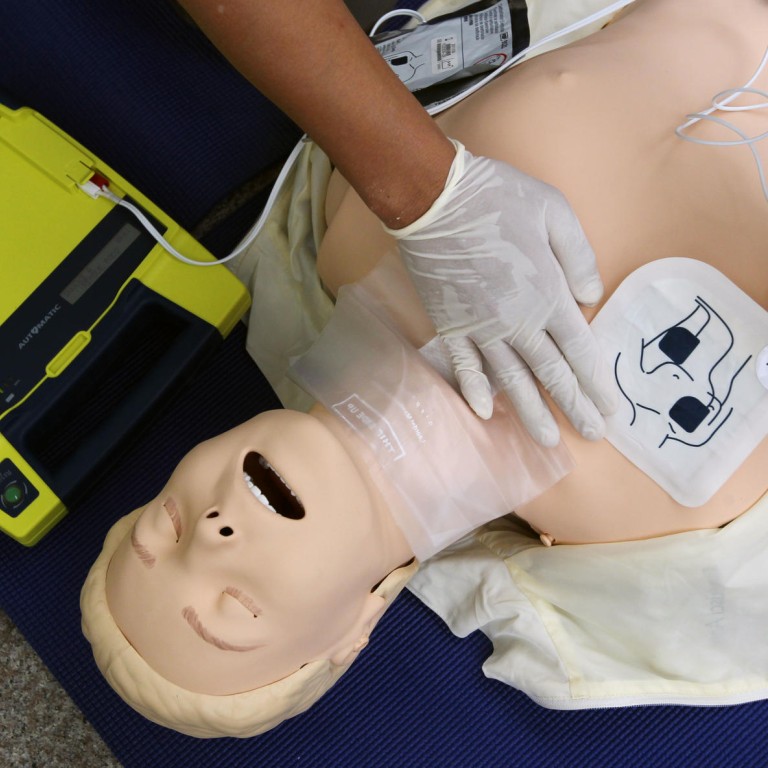
Hong Kong government puts 300 life-saving heart devices in public spaces
People who aren't in a hospital when they are stricken by sudden cardiac arrest face grim odds - with the survival rate estimated at a mere 1 to 3 per cent, according to the Hong Kong College of Cardiology.
People who aren't in a hospital when they are stricken by sudden cardiac arrest face grim odds - with the survival rate estimated at a mere 1 to 3 per cent, according to the Hong Kong College of Cardiology.
This is partly because of a lack of devices called automated external defibrillators (AEDs) in public spaces and delayed responses by emergency teams.
Each minute after cardiac arrest, a victim's survival rate drops by 7 to 10 per cent. In Hong Kong, an ambulance can reach the patient within 10 to 12 minutes of an emergency call - most likely too late.
Sudden cardiac arrest (SCA) - where the heart stops beating usually due to an electrical disturbance disrupting its pumping action - affects 18 per 100,000 people in Hong Kong.
If successful defibrillation, where a device gives the heart an electric shock is achieved within three minutes, 75 per cent of those with severely abnormal heart rhythm can be revived, according to studies. Publicly available AEDs have been proven to save 50 per cent more lives in out-of-hospital cardiac arrest cases, says cardiologist Dr Kathy Lee Lai-fun.
The Leisure and Cultural Services Department has launched a HK$3 million programme to install more than 300 AEDs at around 250 public areas. Eighty of these venues - including parks, playgrounds, sports centres, tennis courts and football pitches - have been fitted with the devices, and the rest will be completed by June.
Nearly 60 cultural spots, such as public libraries, civic centres and museums, will have AEDs by the middle of the year.
"[The chosen] venues have high patronage rates and users of the facilities usually engage in a greater degree of exercise," says a department spokesman. "The availability of AEDs at these venues can enable those in need to receive appropriate first-aid treatment in a timely manner."
All of the department's aquatic venues such as pools and beaches have had defibrillators since 2011.
There is no button to push - once the pads are placed on the victim, the device automatically checks heart rhythm and delivers a shock if necessary. It then assists the responder in adminstering CPR by setting the pace for proper chest compressions with a built-in metronome.
"[They] can be used by any trained personnel … To meet the operation needs, the AEDs are required to be fully automatic," says the spokesman.
The AEDs - which have a Cantonese voice prompt - are made by Denmark-based Cardiac Science and supplied by Pacific Medical Systems.
"The benefit of the programme is apparent," says Jules Flach, the CEO of Pacific Medical Systems. "One of the newly installed AEDs was used in an emergency, which occurred on a football pitch on April 11, to help save a man who collapsed with sudden cardiac arrest after a game."
With the life-saving devices now in place, the next step is to train people to operate them. Public training courses, which take no more than one day, are offered by the Hospital Authority's Accident and Emergency Training Centre, Fire Services Department, St John Ambulance, Auxiliary Medical Services and the Red Cross.

